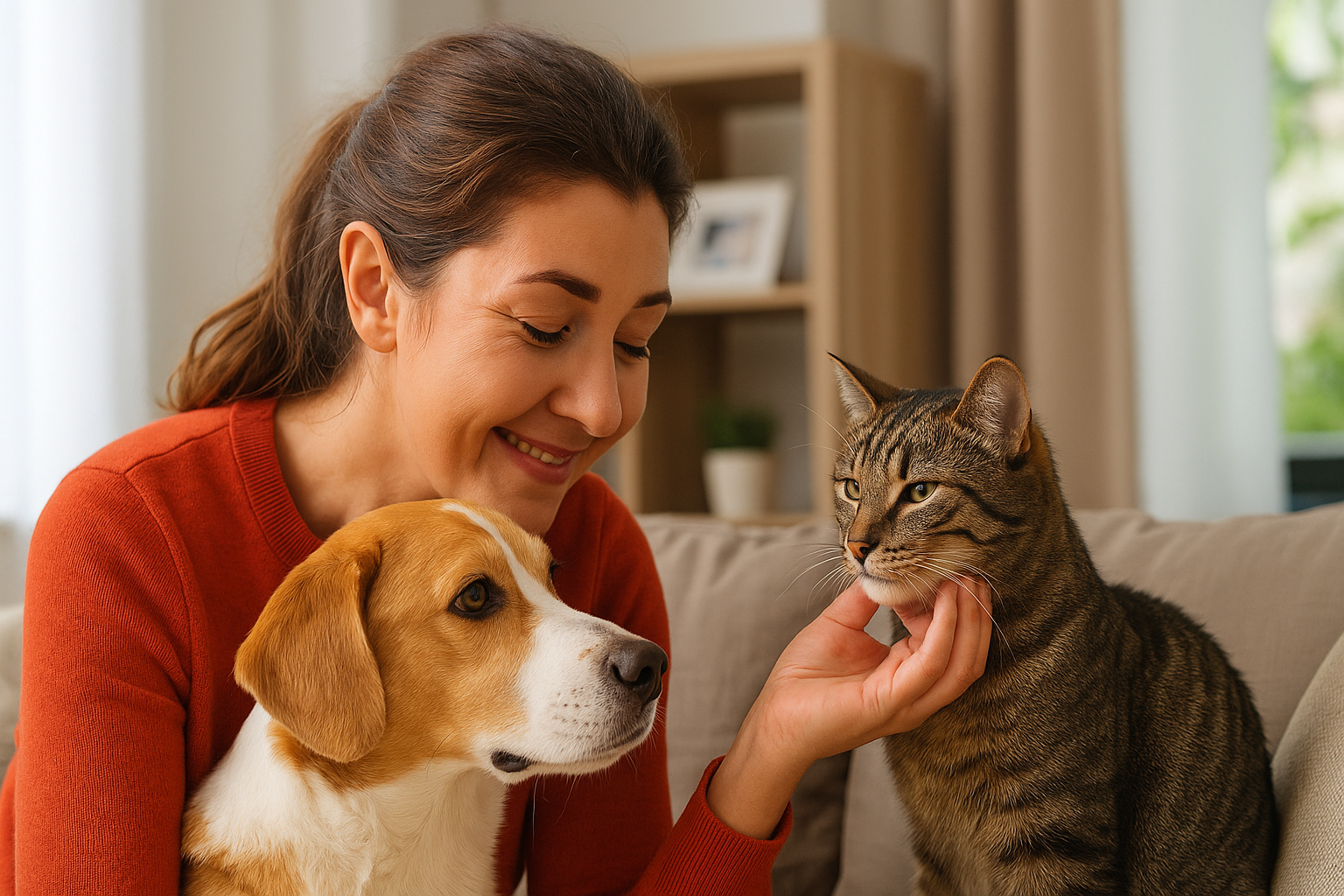Living with a dog or cat is much more than providing food, water, and shelter. It’s about creating a real connection, a bond so strong that your pet sees you as their safe haven. Trust isn’t built overnight; it’s cultivated like a plant that needs constant care.
In this guide, we will explore how to build a deep bond with dogs and cats, understanding the differences between species, respecting each animal’s pace, and using small daily actions to transform coexistence into a true partnership.
1. Trust Takes Time and Consistency
Every human or animal relationship requires an adaptation period. A new dog or cat in the home can take days, weeks, or even months to understand that the environment is safe.
Rescue dogs may have lived through traumatic experiences and need extra patience.
Adopted cats may spend days hiding before feeling comfortable to explore.
Practical tip: Don’t rush the approach. Give space and allow the animal to come to you at their own pace. Trust grows when the pet sees you respect their boundaries.
2. Communication Beyond Words
Your pet doesn’t understand complex sentences but is highly tuned to tones, gestures, and facial expressions.
With dogs: Firm tones convey security; cheerful tones indicate playtime.
With cats: Slow, gentle movements signal that you’re not a threat.
Real example: If a dog gets scared by loud voices, even if they’re not directed at him, it can make him less confident. Similarly, a cat with ears back and a rapidly swishing tail is saying “stay away for now.”
3. Associate Your Presence with Positive Experiences
The key to a solid bond is making your pet see you as the source of good things.
During playtime: Encourage and actively participate.
At feeding time: Offer food calmly, without rush or stress.
When giving affection: Always respect the animal’s mood and never force physical contact.
Over time, just your voice or scent will bring comfort and reassurance.
4. Respecting Space Shows Respect
Animals, like people, need alone time. Forcing them to interact can make them fearful.
With dogs: Don’t wake them abruptly or pull them to play when they’re resting.
With cats: Respect their safe places, like boxes, shelves, or cozy corners.
Important: Having a safe hiding spot is very important, especially for pets still getting used to their environment.
5. Routine: A Trust-Building Ally
Pets feel safer when they know what will happen. Predictability reduces anxiety and fosters calmness.
- Fixed meal times
- Walks at the same times every day
- Defined spots for sleeping, playing, and bathroom needs
Extra benefit: A pet with a consistent routine adapts more easily to changes because they know their needs will always be taken care of.
6. Positive Reinforcement: The Foundation of Healthy Training
Using rewards to teach behaviors is more effective and strengthens the bond.
With dogs: Praise and treats when they obey a command.
With cats: Give treats or toys when they use the scratching post instead of the sofa.
7. Know Your Pet’s Species and Personality
Dogs and cats have different needs and communicate in different ways. Even among dogs or cats, each one can be different from the other.
- High-energy dogs (like border collies and Labradors) need more play and mental stimulation.
- Cats that enjoy being alone may prefer short, spaced-out play sessions.
- Senior pets may not enjoy high-energy games but still appreciate calm companionship.
Tip: Spend time observing your pet. Small gestures reveal a lot about what they like and dislike.
8. Create Shared Experiences
The bond becomes stronger when you spend quality time together.
- Daily walks with your dog
- Grooming sessions for pets that enjoy attention and care
- Hunting games with toys for cats
- Short, fun training sessions to teach tricks or commands
These moments show that you are a good and important presence in their lives.
9. Respect Signs of Discomfort
Trust also means knowing when to take a step back.
Frequent yawning, avoiding eye contact, or moving away are signs that a pet wants to rest.
For cats, a quickly swishing tail and ears back are clear signs to stop.
Respecting these signals shows your pet that they can decide when they want to play or interact. This is important for building their trust in you.
10. Make Care Part of the Bond
Moments like feeding, grooming, and vet visits can be opportunities to foster trust.
- Speak calmly while brushing their fur
- Offer treats after a bath or nail trim
- Make vet trips less stressful with comfortable carriers and familiar toys
11. The Power of Patience
Some pets trust quickly, while others take more time. The key is to never give up. Trust builds over time; each act of kindness and care increases the “account” of feelings you share with your pet.
Experience Tips:
Building trust with dogs and cats takes time and requires respect, attention, and genuine affection. It’s not just about having an animal at home, but being an important and positive part of their life.
When a pet trusts you, they don’t just obey or seek affection. They share special moments, play, relax, and—most importantly—live happily by your side.
This kind of friendship is a special and powerful gift that transforms not only the lives of animals but also that of their caregivers.
